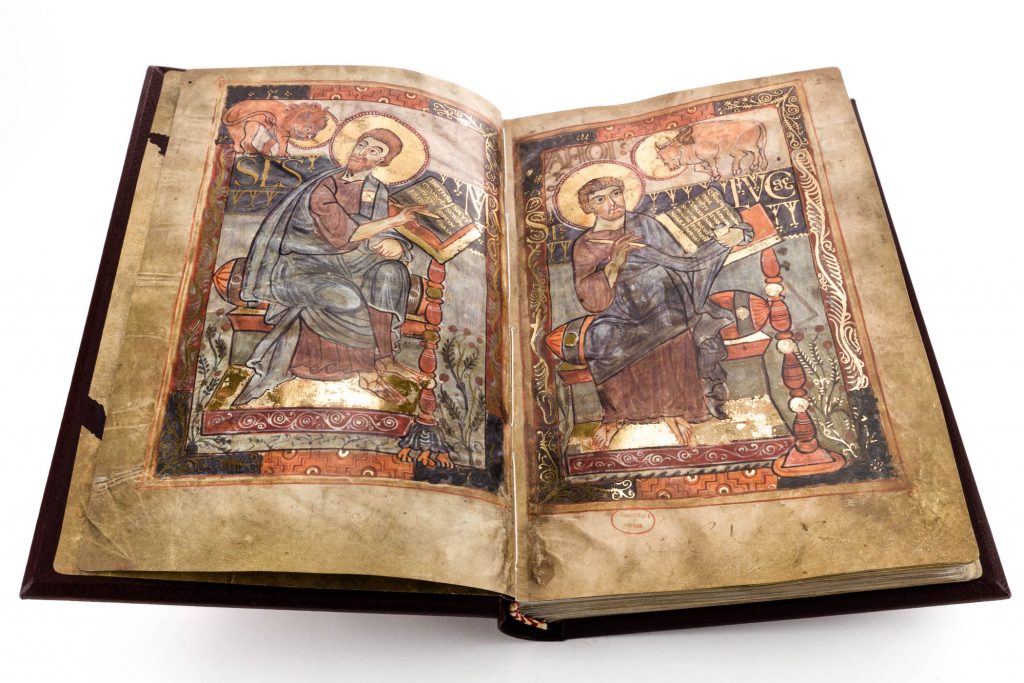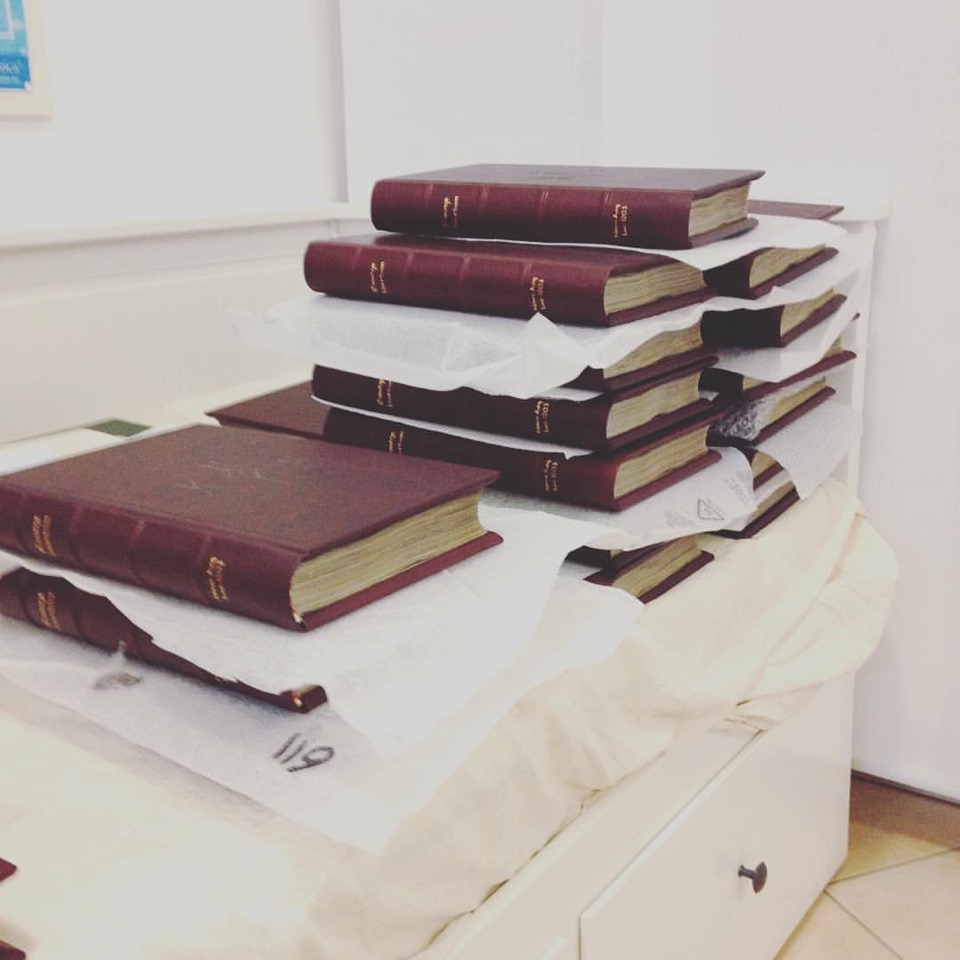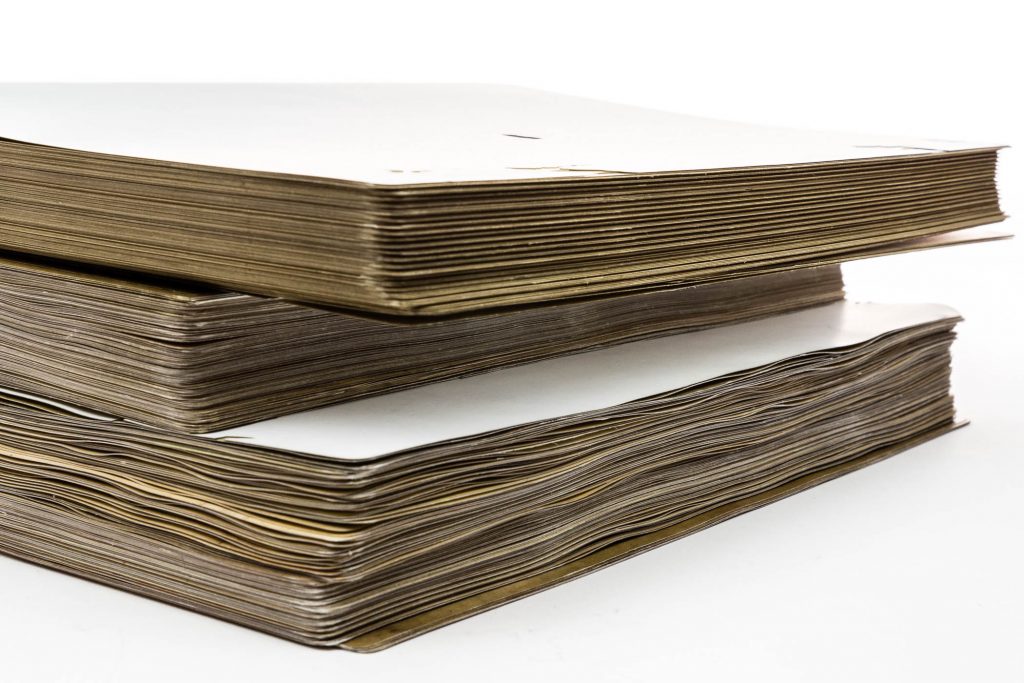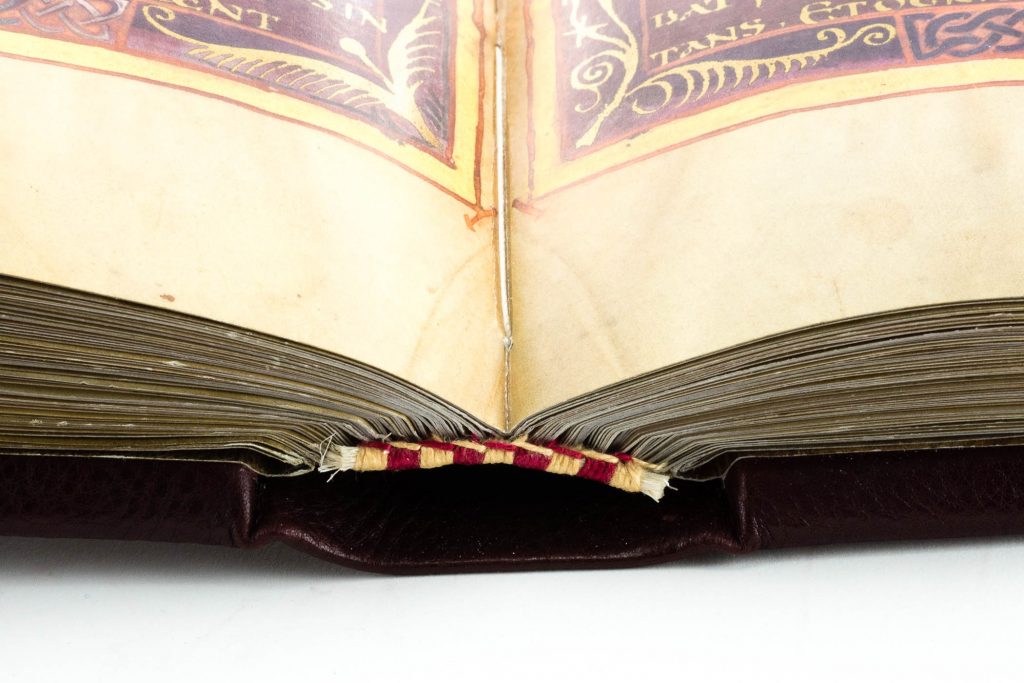One of the most important manuscript commissioned by Charlemagne to celebrate his Empire, the Godescalc Evangelistary is available in a special library facsimile edition.
Read How the Facsimile Project Was Born
The manuscript of the Godescalc Evangelistary, preserved in the Bibliothèque Nationale in Paris with the shelfmark Nouv. acq. lat. 1203, doesn’t need many words of introduction: suffice it to say that it is the earliest known manuscript produced in Charlemagne’s Court School.
The story of this facsimile is a special one: a few years ago the Godescalc manuscript had come very close to being published, however, its production suddenly came to an end when the publishing house that had undertaken the project went out of business. As a result, the printed pages of the Evangelistary ended up laying around in a warehouse likely to be forgotten and lost forever.

We, at Facsimile Finder, couldn’t stand the fact that the facsimile edition of such an important manuscript risked never to be published. So, we decided to come to the rescue of this precious manuscript and, after a lot of hard work and negotiation, Facsimile Finder was finally able to take on the publication of the Godescalc outstanding facsimile edition!
The reason why we have been so fortunate to become the publishers of the Godescalc Evangelistary facsimile is a combination of hard work, expertise in the facsimile world and a bit of luck (that doesn’t hurt). Our facsimile of the Godescalc Evangelistary is a special library edition: there aren’t fancy additions and the facsimile is published in a simple yet elegant leather binding (the original binding is now lost).
Because of this, we were able to focus on the quality of the reproduction in all its complexities (paper, images, gold, binding…) offering a much better price.

Ageing the Paper to Look Like Real Parchment
When the book-block first arrived, after carefully analyzing it, we found ourselves facing a question: was it possible to make the pages more similar to those of the original manuscript, also from an optical, tactile and even auditory standpoint?
Our expertise in the world of facsimile editions, including that of the production process, turned out to be extremely helpful: so, with the cooperation of Giacomo Cecchetti (Pazzini Editore) we ran some tests to age the pages.
Below you can see three different kinds of ageing:

- The top book-block is as folios come from the printing process, without any additional processing;
- the middle book-block is aged after the quires are sewn together. It’s a light treatment that adds a bit of cockling to the outer edges of the folios;
- the bottom book-block has undergone the longest but most effective treatment. Bifolia are individually treated before being gathered in quires. They’re then hand-sewn and the covers are mounted on the book block.
As you see, the bottom book-block shows a certain movement: so if you were to have a guess, which one would you think we chose? Yes, the third one. This is a process that costs twice the simpler aging, but, as you can see from yourself, it was totally worth it, and – surprise! – we kept the sale price as initially planned!

How We Chose the Appropriate Binding for the Godescalc Evangelistary Facsimile
As the manuscript’s original binding is lost and being the current one unfortunately quite damaged, we decided to go for a simple leather binding with Charlemagne monogram, debossed at the center of the front and back covers.
On the spine, two simple titles: Evangeliarium (as it’s called the manuscript in the BnF catalog) and Nouv. Acq. Lat. 1203, its shelf-mark at the library. The font we used is similar to the Carolingian script of the manuscript.
The book-block is hand-sewn and the headbands are in two colors, attached to the book-block through the traditional process of bookbinding and hand-sewn with silk thread.


So how do you feel about the covers? Hopefully you’ll like them!
Godescalc Evangelistary Facsimile still Up for Grabs!
Although published in 2015, the Godescalc Evangelistary facsimile is still available! Because of a very limited publication of 100 copies, only a few copies remain so don’t miss the opportunity of owning this beautiful masterpiece. For further info simply get in touch with us, we are happy to help!
Subscribe to Our Newsletter

